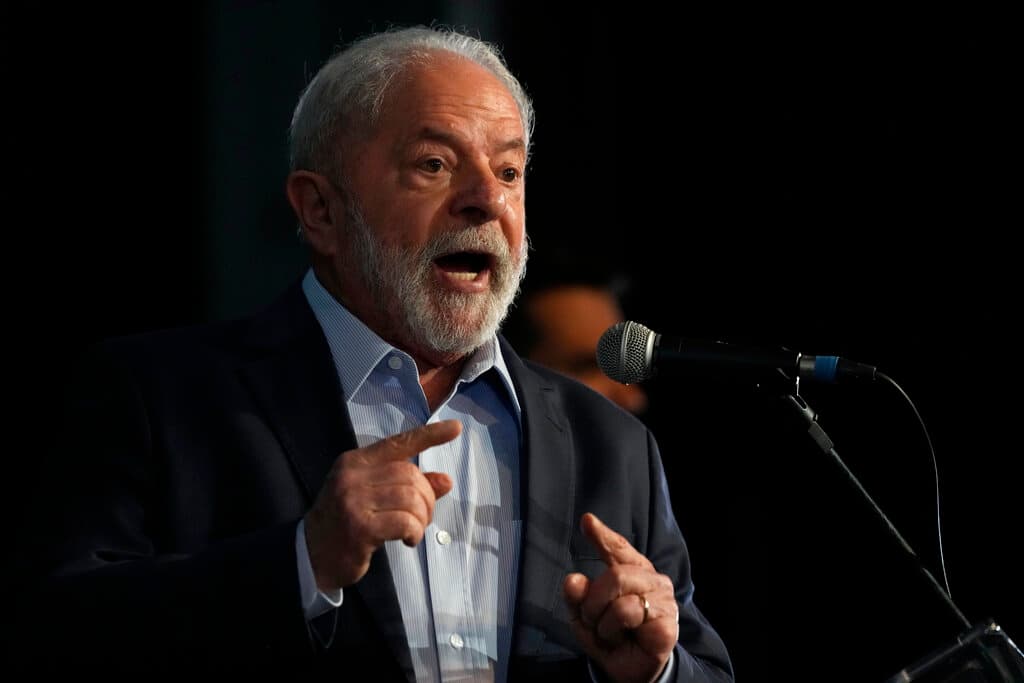Expect Latin America’s Pink Wave To Ebb in 2023
President Biden is paying scant attention, if any, to Latin America. As problems mount next year, the hemisphere will demand a coherent regional strategy.

While many will soon be saying, “Feliz año nuevo,” 2023 is shaping up as something other than a happy year for the populist leftists who currently rule Latin America. Is the region’s pink wave set to ebb?
When Brazil’s Luiz Inacio Lula Da Silva is inaugurated on Sunday, it will complete a stunning rise for Latin America’s left. In March, a socialist, Gabriel Boric, was sworn in as Chile’s president. In May a former member of the leftist terrorist group M-19, Gustavo Petro, won an election in Colombia.
Two other leftists have been in power since 2019: President Fernandez of Argentina and the resident of Los Pinos, Mexico’s equivalent of the White House, President Lopez Obrador. Also, the dictators of Nicaragua, Venezuela, and Cuba are entrenched in power.
Throughout his term Mr. Lopez Obrador, known as AMLO, has shown little interest in foreign policy or regional politics. This year, though, protests erupted at home against his failed policies and the assault on the country’s democratic institutions, so he attempted to unite — and lead — the region’s leftists.
First, Mr. Lopez Obrador refused to attend a Summit of the Americas in June at Los Angeles, where President Biden planned to present his vision for the region — which he has yet to spell out. Mr. Lopez-Obrador’s excuse for the no-show was the lack of invitations to the anti-American autocrats of Cuba, Venezuela, and Nicaragua.
Then, AMLO planned to use this fall’s Pacific Alliance summit to forge a leftist bloc united behind the idea of diminishing Washington’s influence in the region. Except the Peruvian parliament impeached President Castillo on corruption charges and banned him from traveling. Mr. Lopez-Obrador then decided to move the summit to Lima from Mexico City.
As the political mayhem intensified with Mr. Castillo’s arrest, though, the Pacific Alliance summit was canceled. Leaving no leftist behind, Mr. Lopez-Obrador and other regional leaders are supporting Mr. Castillo.
The Mexican president’s feeble foray into regional politics and his failed attempt at uniting its leftists exposed sharp differences among the various members of this year’s much-heralded “wave”: Evidently, not all shades of red are created equal.
Mr. Da Silva may stress the environment, but his record on deforestation is less than stellar. Leftist pieties, such as LGBT rights, are eschewed by the likes of President Maduro, the utterly homophobic Venezuelan.
Peru’s Mr. Castillo and the vice president who took his place, Dina Boluarte, hail from a party with Marxist-Leninist roots. Argentina’s Mr. Fernandez and his vice president, Cristina Kirchner, are Peronist-populists. Chile’s Mr. Boric is a moderate leftist.
Attempts to turn this pink hodgepodge into a coherent political bloc appear to be doomed. Expect some of the region’s leftist leaders to fare worse than others.
In 2023, “AMLO will lose out, Lula will prosper, as will Boric, while Petro will lose out,” a former Mexican foreign minister who teaches Latin American studies at New York University, Jorge Castaneda, told the Sun. The dictators — Daniel Ortega of Nicaragua and Nicolas Maduro of Venezuela — “will come out even,” he added.
Once Argentina sobers up from its World Cup victory celebrations, it will still have to deal with a political crisis: the aftermath of this month’s conviction of Mrs. Kirchner on corruption and fraud charges. The Kirchners had a grip on the country’s power base since 2003, and the vice president is not expected to go down quietly. The political mess will likely deepen as the October 2023 presidential election nears.
Unlike the early 2000s, when several left-leaning presidents were elected by wide margins, the current batch of leftists won by razor-thin majorities. Rather than basing their choices on ideology, voters seemed to be registering protests against incumbents.
As none of the elected leftists are free of what always plagues Latin America’s governance — corruption and incompetence — voters will likely turn their backs on them as quickly as they have put them in power.
What’s worse, the region’s inflation is expected to reach 13 percent next year — far above the rest of the world’s average of 5 percent, according to a FocusEconomics projection. Growth will slow, too.
Brazil’s economy, the region’s largest, is expected to grow 0.9 percent in 2023, compared with this year’s 2.9 percent, according to the United Nations. Mexico’s economy, the second largest, is projected to grow by just 1.1 percent.
With near stagflation conditions, the region’s leftists will increase reliance on Communist China, which is already entrenched in the Western Hemisphere. As is evident from their UN votes, some may be expected to tighten relations with Russia and Iran as well.
Turning to such unreliable and undemocratic allies bodes ill for the Latins. It could also prove hazardous for America. Beyond obvious dangers, such as Iran’s growing presence in Florida-neighboring Venezuela, expect the flood of would-be immigrants to swell even further next year.
President Biden is paying scant attention, if any, to Latin America. As the pink wave dims and problems mount in 2023, the hemisphere will demand a coherent regional strategy.

